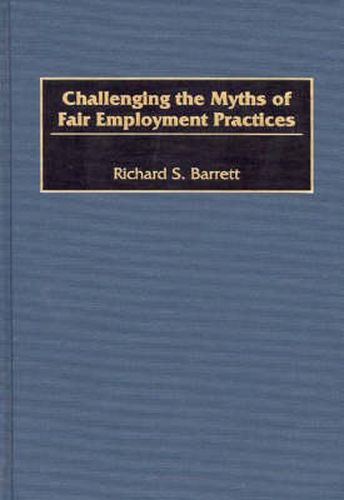Readings Newsletter
Become a Readings Member to make your shopping experience even easier.
Sign in or sign up for free!
You’re not far away from qualifying for FREE standard shipping within Australia
You’ve qualified for FREE standard shipping within Australia
The cart is loading…






This book is a practical guide to the development and use of selection procedures for those who are concerned with human resource management, but who are not necessarily specialists in personnel testing. Dr. Barrett explains how to improve the quality of the work force with the most modern techniques while avoiding unfair discrimination against minorities, women, older workers, and the disabled. He challenges myths that have grown up in the past 30 years which interfere with the use of valid and fair selection procedures. Topics include: historical and legal background, cognitive and non-cognitive selection procedures, validity, and measuring and reducing adverse impact. Although he concentrates on Title VII of the Civil Rights Act, there is special treatment of the Americans with Disabilities Act and the Age of Discrimination in Employment Act.
Clearly written and informal, this book is every bit as professionally sound as his earlier book, Fair Employment Strategies in Human Resource Management. It removes part of the mystique about tests with many illustrations of good and bad practice. Besides being useful to human resource executives, it is a valuable supplementary text for graduate and undergraduate courses in personnel management. Attorneys would also find it especially valuable because the author documents its point with citations to important cases and the the Uniform Guidelines.
$9.00 standard shipping within Australia
FREE standard shipping within Australia for orders over $100.00
Express & International shipping calculated at checkout
This book is a practical guide to the development and use of selection procedures for those who are concerned with human resource management, but who are not necessarily specialists in personnel testing. Dr. Barrett explains how to improve the quality of the work force with the most modern techniques while avoiding unfair discrimination against minorities, women, older workers, and the disabled. He challenges myths that have grown up in the past 30 years which interfere with the use of valid and fair selection procedures. Topics include: historical and legal background, cognitive and non-cognitive selection procedures, validity, and measuring and reducing adverse impact. Although he concentrates on Title VII of the Civil Rights Act, there is special treatment of the Americans with Disabilities Act and the Age of Discrimination in Employment Act.
Clearly written and informal, this book is every bit as professionally sound as his earlier book, Fair Employment Strategies in Human Resource Management. It removes part of the mystique about tests with many illustrations of good and bad practice. Besides being useful to human resource executives, it is a valuable supplementary text for graduate and undergraduate courses in personnel management. Attorneys would also find it especially valuable because the author documents its point with citations to important cases and the the Uniform Guidelines.